Hands-On – The MeisterSinger Circularis Automatic… The single-hand goes self-winding and in-house
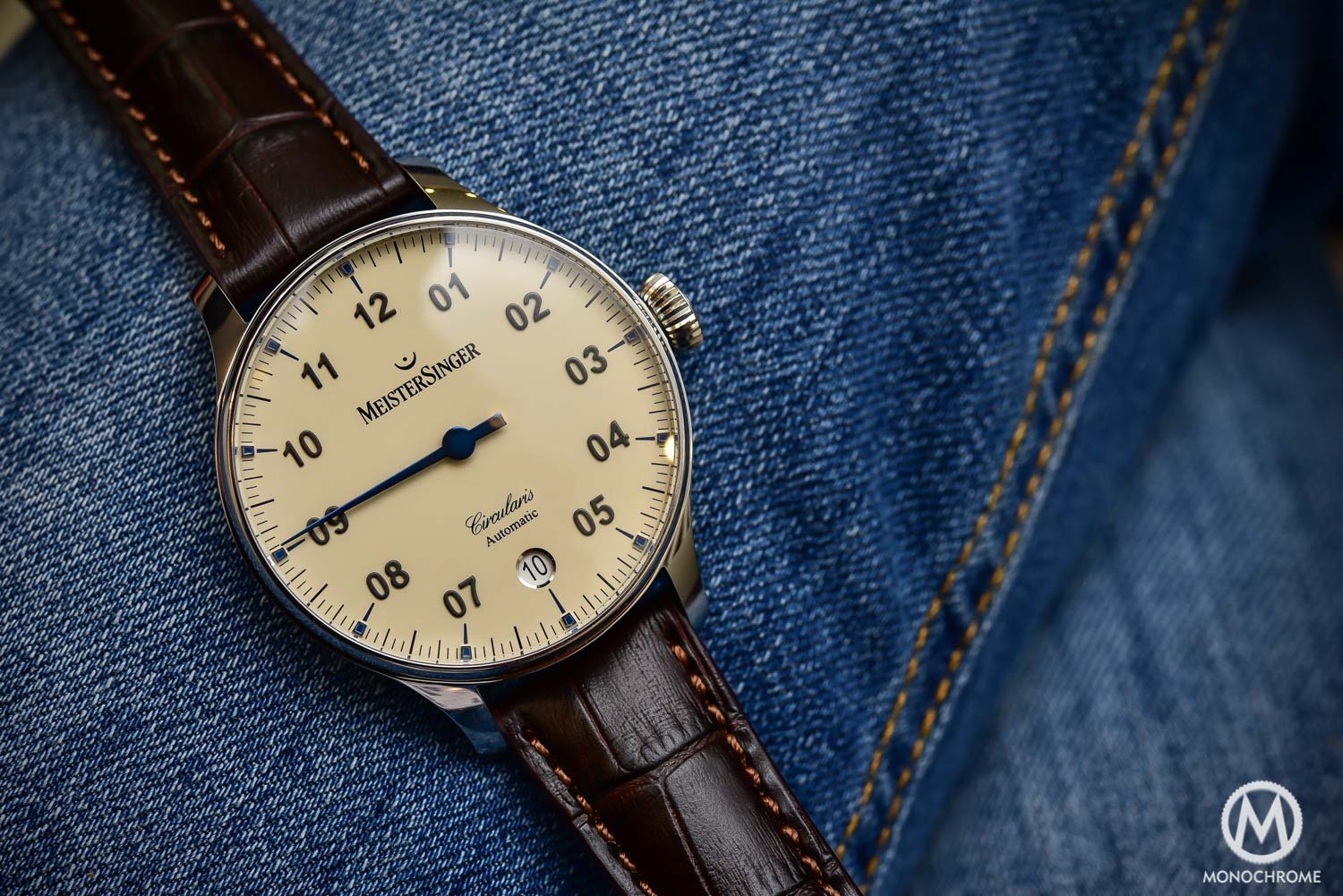
Most of you probably know THE main feature of MeisterSinger watches: the mono-aiguille / single-hand display. That alone is already enough to tickle our interest, linked to the fact that their watches are nice, elegant, quite unique and, best of all, rather inexpensive. What some of you probably don’t know is that since 2 years, the brand can also be called a manufacture, as they have their own in-house movement, the Circularis. This year, the upper-end offer of the brand evolves and turns into a self-winding movement. Here is the MeisterSinger Circularis Automatic – and for once, in-house really adds something more.
As said in the introduction of this hands-on article, MeisterSinger is good at one thing: creating watches with a rather unique display, something that is original enough to adds some exclusivity, however still classical not to enter the “weird watch” category, and all of that for a properly reasonable price. All of their watches (Phanero, Neo, Adhaesio, or even a chronograph) are featuring a single-hand display. And most of them are powered by externally-sourced movements (ETA or clones), which is fine to us. These watches are on a price segment that does not require an in-house movement, except if this movement adds something more. It has to be said: what is the point of an in-house movement in a watch priced below 4,000 or 5,000 Euros, if it’s to do the same thing as an ETA calibre will do (and will most definitely do perfectly)?
The only reason for a brand to go in-house is 1. being a high-end brand, with upper quality standards (Rolex, Vacheron, Patek…) 2. being a company with reasonably priced watches and creating a movement that adds something more than the ETA workhorses. Otherwise, this in-house game is just pointless. It seems that MeisterSinger understood that perfectly and, when they launched their own movement in the Circularis – at that time a manual-wind engine – they wanted to bring something extra for their clients: a nicer finish, a very cool design of the bridges, a long power reserve… still for a reasonable price (below 4,000 Euros). This year, the model evolves with the addition of the self-winding feature on the movement, thus becoming the MeisterSinger Circularis Automatic.
While design-wise, the automatic version of the MeisterSinger Circularis remains quite close from its manual-wind sibling (a few changes that we’ll expose later), the main point of attraction is for sure the movement of this watch. As said, the point of having an in-house movement in a watch from this price segment is only about bringing something more to the final client. Having a time-and-date movement priced twice an ETA for the same final result is slightly pointless. Here, there’s a justification to the higher price and to the in-house name: a movement that is much nicer (in terms of design and finish) and that provides a greater experience to the wearer. The MeisterSinger Circularis Automatic is based on the same movement as the manual Circularis, meaning: double-barrel architecture, 5-day power reserve (120 hours), 4Hz frequency. On top of the movement has been added an automatic module and a rotor.
Apart from its interesting specifications, this movement marvels because of its design. It has clearly been conceived to be pleasant to the eye. The main bridge that covers the movement is shaped with large apertures and curves, to reveal the important features: the balance wheel and the two barrels. To follow the curves of the bridges, MeisterSinger has decided to decorate the movement with circular Geneva stripes, which in the end provides an extremely pleasant result. The edges of the bridges are chamfered, the screws are blued, some wheels are visible… As we said, very pleasant, especially considering the price. The novelty comes from the automatic winding, visible with the addition of a central module and a rotor. Once again, the conception has to be applauded, with a rotor that both resemble the logo of the brand and leaves the view on the two barrels of the movement. This calibre MSA01 really impresses.
Two evolutions are to be noted. The first one is inherent to the conception of the movement: a slightly thicker watch (1mm extra, due to the rotor and automatic module). The second one is the addition of a date, which actually fits the concept, for a watch that gains in practicality on a daily basis: automatic winding and date feature are two things that helps the wearer in its daily use of the watch. This date is positioned in a small round aperture at 6 (replacing the hour index) and is circled by a metallic ring.
For the rest, with this MeisterSinger Circularis Automatic, we find back the main feature that made the brand successful; the mono-aiguille / single-hand display. Once again, as we told you with the Neo or the Phanero, there’s something quite special to this display, a feeling that make you detach from the perception of time, that make you look at time in a different, slower way. It is quite a poetical function, a slow moving complication, which in the end remains extremely easy to use. Because the dial of the MeisterSinger Circularis Automatic is large (almost no bezel), time-reading is convenient. The large central hand point a peripheral track, with 12 hours and markers every 5 minutes – which is more than enough to know if you’re on time to a meeting.
The MeisterSinger Circularis Automatic is available in 4 editions: the classical ivory dial with black numerals, blue hand and indexes, mounted on a brown strap – a dark anthracite grey with white numeral and indexes and orange hand, mounted on a dark grey strap – a dark blue dial with white indexes, numerals and hand, mounted on a light brown strap – an original burgundy dial, with white indexes, numerals and hand, mounted on a black strap. All 4 share a same stainless steel case, measuring a quite large 43mm diameter – not that it is uncomfortable, but you have to be aware. If you want smaller, there’s always the Phanero or the Neo (35mm and 36mm).
 All together, the offer depicted by the MeisterSinger Circularis Automatic is full of interest. The main attraction, the movement, is definitely well conceived, nicely designed and well finished, and provides enough content to justify the upmarket made by the brand. The single-hand display, the hallmark of the brand, is something that we still like here at Monochrome, for its uniqueness. Remains a price of € 4,498 Euros, which seems high compared to the rest of the brand’s production but, then again, totally justified in this technical context. More on meistersinger.com.
All together, the offer depicted by the MeisterSinger Circularis Automatic is full of interest. The main attraction, the movement, is definitely well conceived, nicely designed and well finished, and provides enough content to justify the upmarket made by the brand. The single-hand display, the hallmark of the brand, is something that we still like here at Monochrome, for its uniqueness. Remains a price of € 4,498 Euros, which seems high compared to the rest of the brand’s production but, then again, totally justified in this technical context. More on meistersinger.com.
Specifications of the MeisterSinger Circularis Automatic
- Case: 43mm diameter, 13.5mm thickness – stainless steel, polished – sapphire crystal on both sides – 50m water resistant
- Movement: calibre MSA01, in-house – automatic winding – 120 hours power reserve – 4Hz frequency – time indicated by a single-hand, date
- Strap: alligator leather with steel pin-buckle

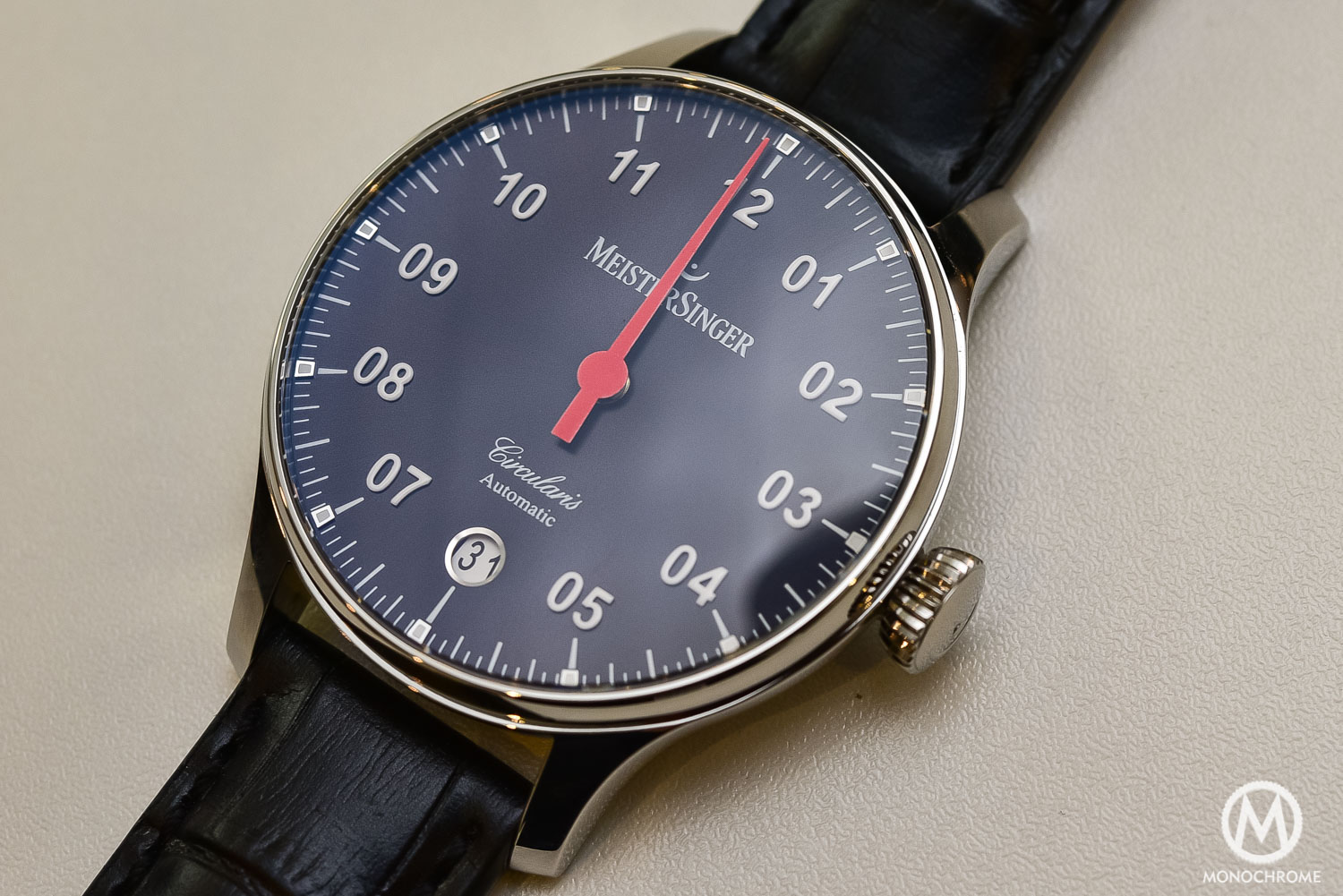
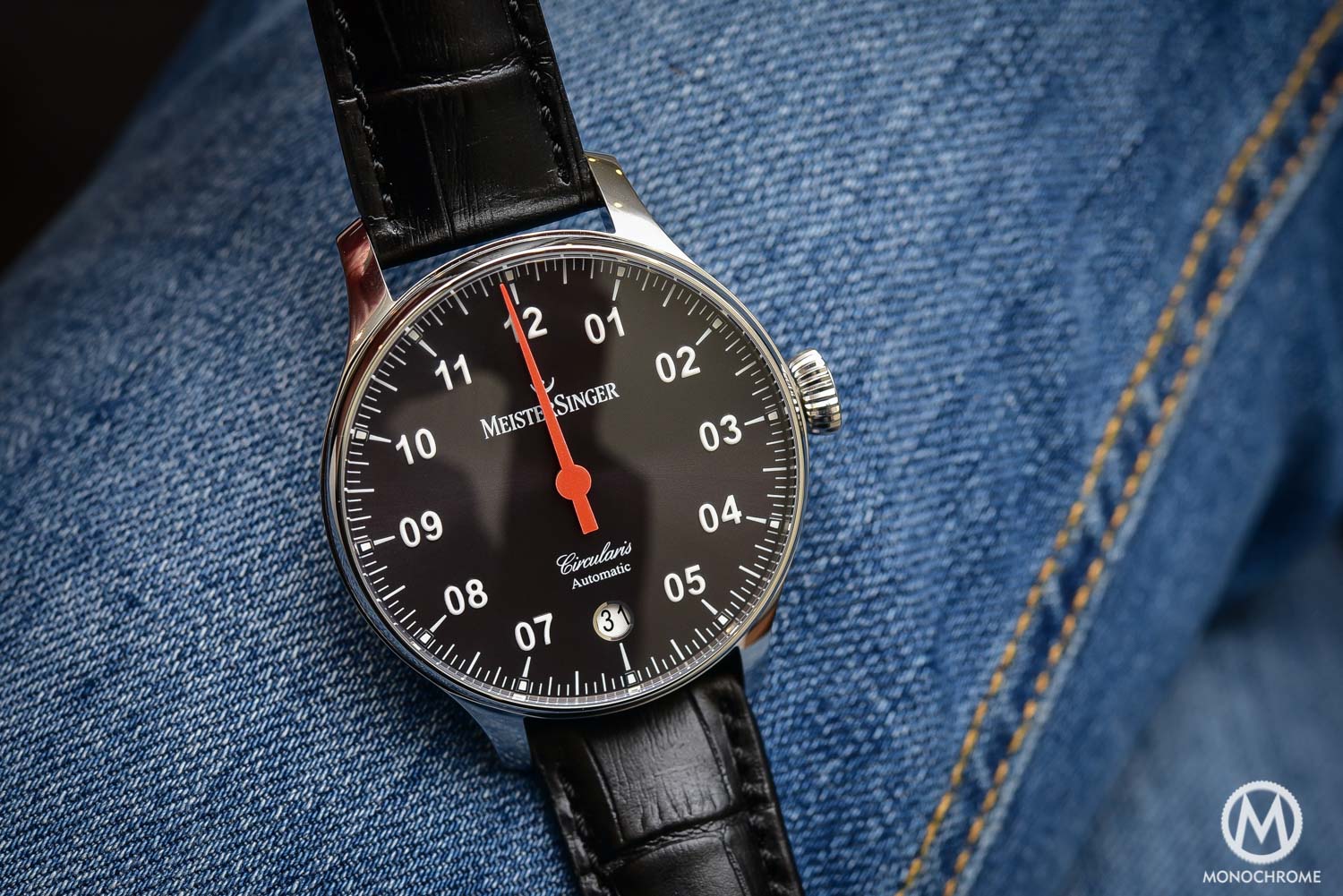
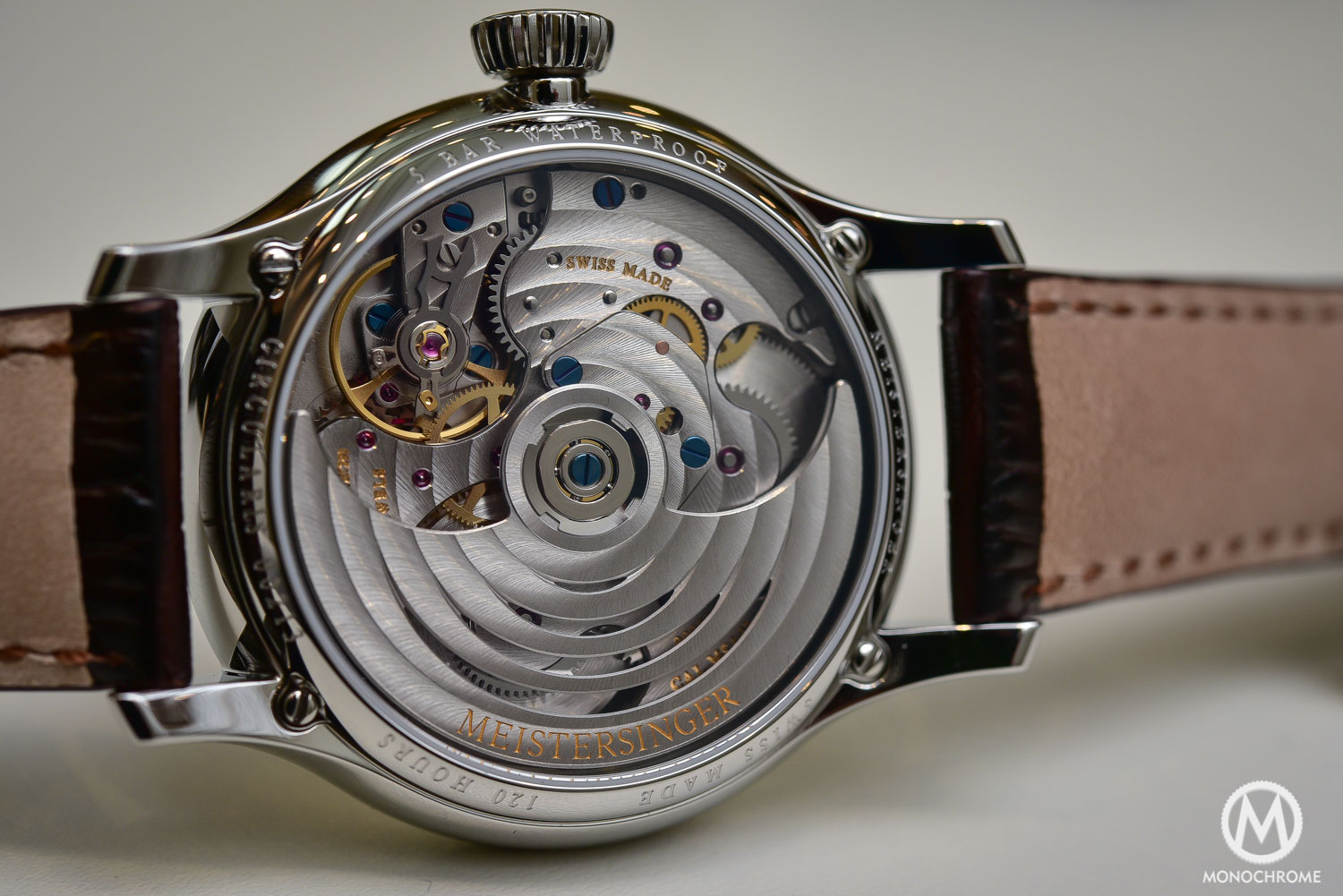
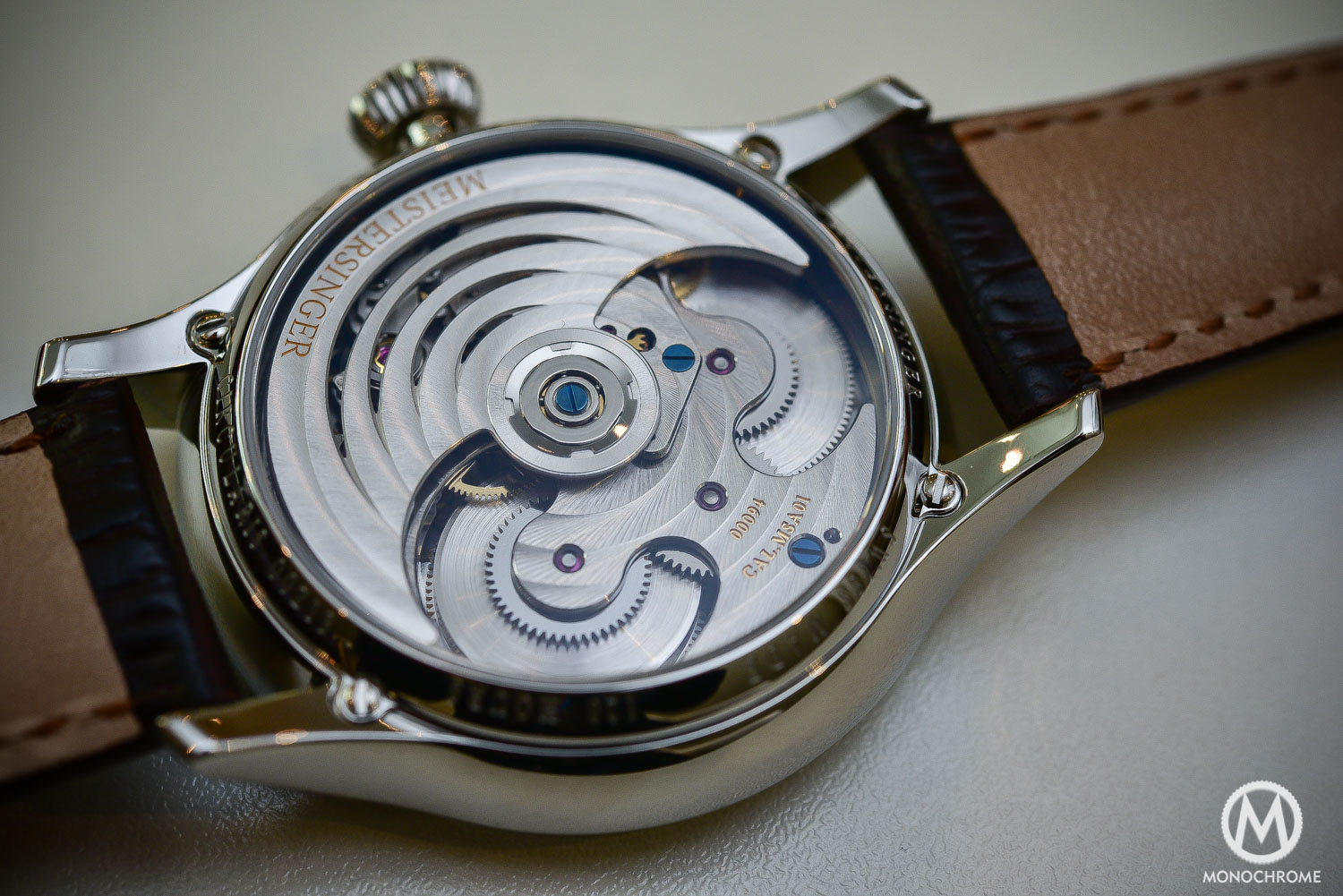

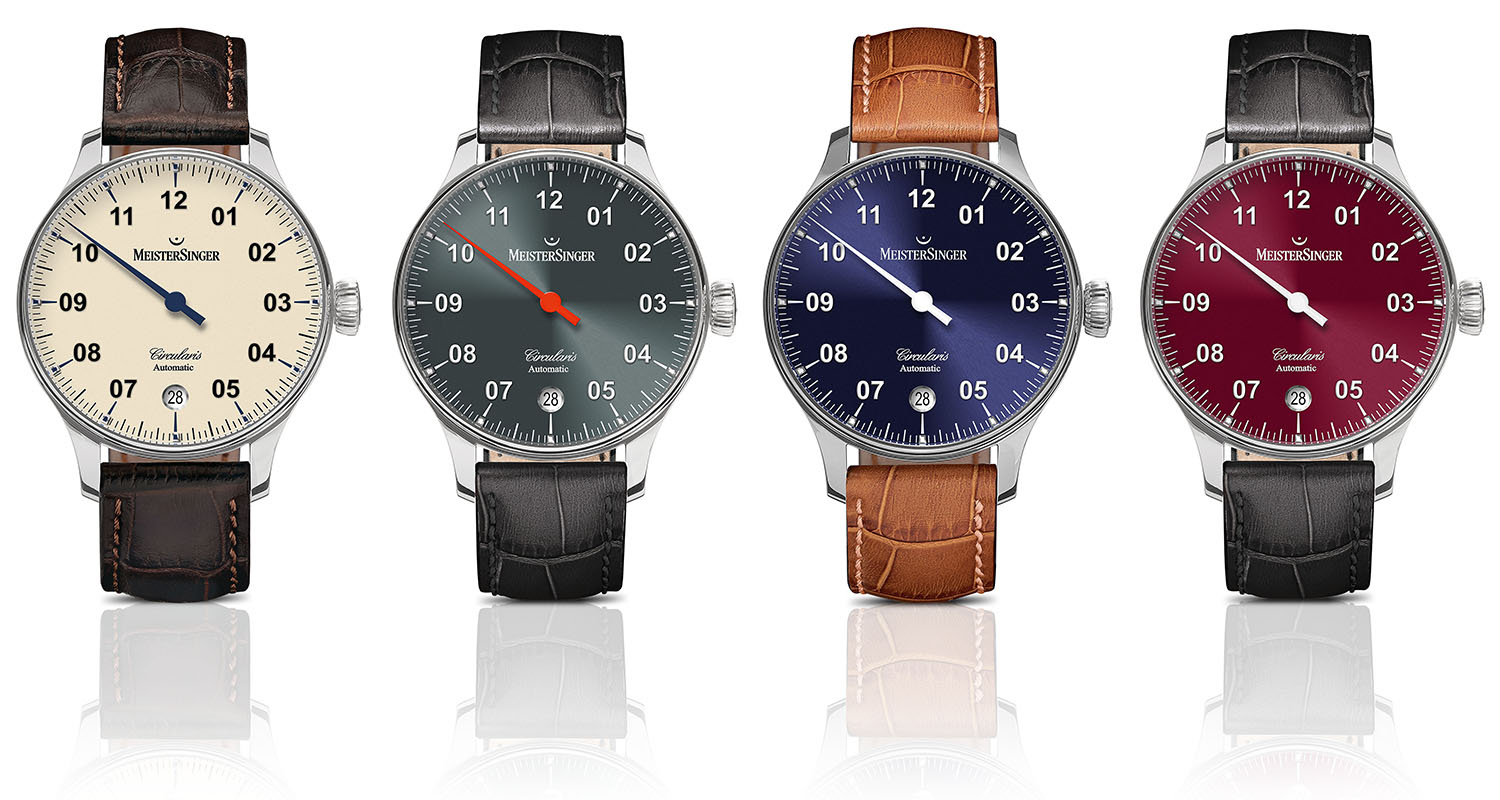



4 responses
Hi Brice, I always loved Meistersinger watches for their unusual way to tell time – closer to human perception and in some way delivering a more relaxing concept of passing time.
No discussion on the aesthetical and architectural design of the movement: it’s great. However still I am not full convinced that the price point is the right one…To be really competitive maybe it is a bit too high (despite good tech features such as long power reserve).
Just my two cents,
regards,
slide68
Maybe you shouldn’t focus on brands. Maybe there’s no reason *for a brand* to “go in-house”, but who cares about brands? I, for one, am not interested in marketing. I’m interested in engineering and craftsmanship. If a company doesn’t produce the movement of its watches, it’s not a watch manufacturer in my book. Why having an in-house movement should be reserved to high-end watches totally beats me. I’d rather wear a Seiko 5 than one of those heartless brand watches with an ETA 2824. After all, the movement is the most important part of the watch. If you don’t agree, just wear a bracelet.
I’d be more impressed if a new version of a 16th century single hand watch, like the upgraded wrist watch fusee movements of Lange and Zenith, a more constant force was delivered to the escapement with some mechanically marvelous variation of stackfreed.
The apparent quality and execution aside, I can’t help but see my outdoor circulat 10″ plastic thermometer with a single red hand staring at me every morning from outside my Vermont kitchen window announcing the usually very low temperature.